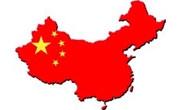Trade Cases

Leibowitz on Trade: Section 301 vs. Section 232
Written by Tim Triplett
July 10, 2018
Lewis Leibowitz, trade attorney and contributor to Steel Market Update, offers the following commentary on the latest developments in Washington:
Following is a quick update on the new Section 301 China tariffs, which went into effect on July 6.
China implemented its own 25 percent tariffs on a variety of U.S. exports to China. Soybean farmers and other agricultural interests are the most profoundly affected. These retaliatory tariffs on about $34 billion in U.S. exports were imposed on July 6, within hours after the U.S. tariffs on a similar amount of Chinese exports to the United States took effect.
On July 6, the Office of the U.S. Trade Representative released a notice concerning product exclusions under the Section 301 tariffs. There are interesting differences between the exclusion procedures announced by USTR (published on Monday in the Federal Register) and the Section 232 product exclusion procedures I have discussed before.
Unlike the Section 232 exclusions, the Section 301 exclusions have a time limit; any product exclusion request must be submitted by Oct. 9, 2018. Section 232 exclusion requests may be filed at any time.
Comments, including objections, must be submitted within 14 days after notice of the request has been published. Section 232 exclusion procedures require objections to be filed within 30 days after the request is posted online at regulations.gov.
Any exclusions granted will be retroactive to July 6, 2018, the date the Section 301 tariffs went into effect. Exclusions granted under the Section 232 tariffs will apply to entries on or after the date the exclusion request is posted online.
Trade associations, as well as individual companies, are eligible to apply for product exclusions under the Section 301 tariffs. Under the Section 232 tariffs, only individual companies may apply for exclusions.
Any exclusion under the Section 301 tariffs will apply to all imports of the product from China. Under Section 232, the exclusion, if granted, will benefit only the particular company applying for the exclusion.
The Section 301 product exclusion procedures do not promise an answer by any particular date. By contrast, the Section 232 product exclusion regulations commit to an answer “normally” within 90 days. As the answer period has expired for several hundred requests, the 90-day period is now being honored largely in the breach. In other words, the fact those many requests did not receive approval by the deadline serves to reinforce that requests are not approved until explicitly granted. Customs won’t accept a filed exclusion request as proof of approval simply because it was not denied within 90 days.
Because the product exclusion procedures are a notice rather than a regulation, there is no opportunity for public comment on these procedures. Perhaps it is because the Section 301 procedures are time-limited; Oct. 9 is the deadline for any exclusion requests.
In my assessment, the product exclusion procedures for the Section 301 tariffs have some advantages over the Section 232 procedures, in that trade associations are permitted to file blanket requests covering all their members. The limitation of exclusions to specific 10-digit tariff classifications has the advantage of applying an exclusion to all importers, not just one. However, the Section 301 process has no deadline for action and does not set criteria for approval or rejection that allows companies to decide whether a particular product is eligible for exclusion. The discretion claimed by USTR to approve or deny exclusion requests is effectively unlimited. And neither product exclusion process expressly provides for judicial review or administrative reconsideration of exclusion requests. One important advantage of the Section 301 procedures applies relief retroactively to July 6, the effective date of these tariffs. There is no serious argument that the Section 232 tariffs should not have a similar retroactive procedure. Why not make exclusions under Section 232 retroactive to March 23, 2018, instead of the date of posting, which is outside the control of the requesting party?
Lewis Leibowitz
The Law Office of Lewis E. Leibowitz
1400 16th Street, N.W.
Suite 350
Washington, D.C. 20036
Phone: (202) 776-1142
Fax: (202) 861-2924
Cell: (202) 250-1551

Tim Triplett
Read more from Tim TriplettLatest in Trade Cases

Price: Reciprocal tariff changes and potential new tariffs for Brazil, Canada, others
Trade issues do not seem poised to leave the headlines anytime soon. And as recent developments show, the administration’s tariff policy remains ever-changing.

Bessent on Vietnam: 20% tariff stands, Section 232 protections apply
US Treasury Secretary Scott Bessent told reporters that tariffs for Vietnamese imports to the US are 20% and "specific industries" have trade protections under the Section 232 tariffs.

Steel groups welcome passage of budget bill
Steel trade groups praised the passage of the Big Beautiful Bill (BBB) in Congress on Thursday.

Canada moves to curb steel imports with TRQs
Canada has implemented tariff-rate quotas (TRQs) on steel imports to help stabilize its domestic market.

Commerce launches probe into unfairly traded rebar imports
Here are the details and a case timeline for the rebar trade case recently initiated by the Commerce Department.
